City Accepts $14 Million Federal Streetcar Grant
City wins TIGER grant after "a brutal competition" where demand for transit dollars greatly exceeded the sums appropriated.
The seventh try was the charm for the City of Milwaukee, as its streetcar proposal finally won an important $14.2 million TIGER grant from the U.S. Department of Transportation, after six previous unsuccessful attempts to secure funding for the streetcar expansion.
The grant award was announced earlier in the week, and an event was held downtown Thursday, October 29th, to accept the funding and for streetcar supporters to do a victory lap. Streetcar opponents were nowhere to be found as a crowd of about 60 gathered on the steps of the U.S. Bank Center overlooking the projected streetcar route along E. Michigan St. at N. Cass St.
The presentation was made by Peter M. Rogoff, the Undersecretary of Transportation for Policy and former Federal Transit Administrator. He said the grant was made after “a brutal competition” where demand for transit dollars greatly exceeded the sums appropriated.
According to a press release:
“The project is one of 39 federally-funded transportation projects in 34 states selected to receive a total of $500 million under the Department’s Transportation Investment Generating Economic Recovery (TIGER) program.
The Department received 627 eligible applications from 50 states and several U.S. territories, including Tribal governments, requesting 20 times the $500 million available for the program.”
One of the intentions of the program is to “accelerate the renaissance” of urban areas through transit infrastructure funding, said Rogoff. Since 2009 the program has awarded $4.2 billion in grants to 381 projects in all 50 states. To date there have been over 6,700 applications requesting $134 billion in funds.
So, why does the government invest in streetcars?
The importance of transit funding in an urban area is not just “how to get from Point A to Point B, but how to make A and B better places,” Rogoff said.
“When you make investments downtown it begets a cycle,” Rogoff said. And it’s not one of those downward cycles that so many people relate to urban areas, he said.
Now these cities, and others are expanding their streetcar lines, and Rogoff spoke of the “secondary and tertiary investments” and “third and fourth boost” to the economy that comes with rail infrastructure expenditures.
Milwaukee’s streetcar project, which we have covered extensively in Urban Milwaukee, has had “heat, light and noise,” Rogoff said, alluding to the project’s long and contentious history.
Ald. Bob Bauman mentioned these controversies as a contributing reason for the city’s failure to secure TIGER funding in its six previous tries.
“The project was good on its merits,” he said of Milwaukee’s streetcar proposal, “but it suffered from political problems” that concerned federal officials. The program had been authorized, and then re-authorized. “We let a lot of money slip through our fingers” as the project was debated, and we missed opportunities for streetcar expansion funding for the simple reason that we never built a streetcar line to begin with.
But this time, the funding went through, and Bauman concluded his remarks by offering his gratitude to Rogoff. “Thank you for continuing to open the mail from the City of Milwaukee,” he said.
Mayor Barrett also put the political issues into perspective, and into the rearview mirror. “I thank the people who have stood with us because they understand that this is all about economic development,” he said. This at a time when there is “more investment than we have seen in generations” here.
Barrett cited Bauman and Ald. Nik Kovac as the two most enthusiastic supporters of the streetcar project on the Common Council. “They prodded, and prodded and prodded and said, ‘let’s get this thing going,'” the mayor said. There will be further expansions, he said, including to Kovac’s UWM neighborhood, Bauman’s Marquette University, the Walker’s Point of Ald. Jose Perez and the Airport district of Ald. Terry Witkowski. The last one mentioned will have to go through the territory of Ald. Tony Zielinski, a streetcar opponent who was not at the event.
Other speakers included Beth Weirick of Downtown Milwaukee, Ken Kraemer of Building Advantage, representing the union construction workers who are finding employment in the downtown construction, Dr. Eve Hall, the CEO of the African-American Chamber of Commerce, and Ald. Willie Wade, who also serves on the Redevelopment Authority of the City of Milwaukee.
Hall and Wade touted the big picture aspect of the streetcar and emphasized that it would provide a means to tie together an unnecessarily divided community, and to provide jobs for a needy segment of the population. Rep. Gwen Moore and Sen. Tammy Baldwin sent representatives to the event, and were recognized for their contribution to securing the funding.
At the Event
The 2 p.m. press conference brought dozens of stakeholders and supporters to the site. They included Department of City Development Commissioner Rocky Marcoux, City Engineer Jeff Polenske, Public Works Commissioner Ghassan Korban and other city employees, including Greg Patin. Kris Martinsek, who has handled publicity for the streetcar, was in the crowd snapping photographs for her streetcar Facebook page. Also present was Rick Barrett, the developer of The Couture, which is to have a streetcar stop incorporated into its construction, along with his architect, Matt Rinka, whose firm has also been selected to work on the Lakefront Gateway Plaza announced earlier this week. [See Plenty of Horne: “Lakefront Gateway Design Winner Named.”] Jeff Bentoff and Joel Brennan were also in attendance for the ceremony.
Photos from the Event
Streetcar Renderings
Urban Milwaukee Streetcar Coverage
- Anti-Streetcar Petition Dies – Bruce Murphy – August 28th, 2015
- Scott Walker Aids Milwaukee Streetcar – Jeramey Jannene – July 13th, 2015
- Streetcar Construction Starts in October – Jeramey Jannene – July 10th, 2015
- The Strange Politics of Anti-Streetcar-ites – Bruce Murphy – June 18th, 2015
- Anti-Streetcar Petition Drive Fails – Bruce Murphy – March 5th, 2015
- Streetcar Signing Is Quite a Celebration – Michael Horne – February 13th, 2015
- Milwaukee Streetcar Approved – Jeramey Jannene – February 10th, 2015
- Who’s Lobbying for the Streetcar – Bruce Murphy – February 5th, 2015
- Will Streetcar Help the Inner City? – Bruce Thompson – February 4th, 2015
- City Attorney Says Streetcar Petitions Might be Moot – Bruce Murphy – January 30th, 2015
- Millennials And The Streetcar – Bruce Thompson – January 27th, 2015
- Streetcar Responses Show Wide Support – Jeramey Jannene – January 22nd, 2015
- Streetcar Approved, but Held – Jeramey Jannene – January 21st, 2015
- Koch-Funded Group Backs Anti-Streetcar Drive – Bruce Murphy – January 20th, 2015
- Streetcar Backers Say They Have the Votes – Jeramey Jannene – January 20th, 2015
- Who is Funding the Anti-Streetcar Effort? – Bruce Murphy – January 20th, 2015
- Will Anti-Streetcar Referendum Succeed? – Bruce Murphy – January 9th, 2015
- The Story Behind the Streetcar Referendum – Michael Horne and Bruce Murphy – January 8th, 2015
- Council Delays Streetcar Until January – Jeramey Jannene – December 16th, 2014
- Committee Takes No Action on Streetcar – Jeramey Jannene – December 10th, 2014
- Committee Approves Milwaukee Streetcar – Jeramey Jannene – December 9th, 2014
- RACM Approves Tax Funding for Streetcar – Michael Horne – December 8th, 2014
- How to Sell the Streetcar – Michael Horne – November 28th, 2014
- Next Stops for the Streetcar – Michael Horne – November 24th, 2014
- Barrett Moving Forward with Streetcar – Jeramey Jannene – November 18th, 2014
- Who Will Be Streetcar Operator – Michael Horne – May 8th, 2014
- A Streetcar Named Cooperation? – Dave Reid – April 27th, 2014
- How a Streetcar Spurs Development – Angie Schmitt – November 3rd, 2013
- Streetcar Social – Michael Horne – September 12th, 2013
- Mayor Says Streetcar is a “Trojan Horse” – Michael Horne – April 17th, 2013
- Whoops, We Changed Our Mind – Dave Reid – September 27th, 2012
- Battle of the Bobs: Donovan vs Bauman Streetcar Press Conference – Jeramey Jannene – May 18th, 2012
- Important Hoan Bridge and Milwaukee Streetcar Meetings This Week – Dave Reid – November 14th, 2011
- Milwaukee Streetcar Passes Common Council – Jeramey Jannene – July 26th, 2011
- Keep the Milwaukee Streetcar Moving Forward – Jeramey Jannene – July 8th, 2011
- Milwaukee Streetcar at Apex – Jeramey Jannene – June 16th, 2011
- Milwaukee Streetcar Takes Key Step Forward – Jeramey Jannene – May 6th, 2010
- Milwaukee Streetcar Meeting This Thursday – Jeramey Jannene – October 5th, 2009
- Milwaukee Streetcar Routes Unveiled by Mayor Barrett – Jeramey Jannene – September 21st, 2009
- Milwaukee Streetcar Round-Up – Jeramey Jannene – April 19th, 2009
- Vote for your Favorite Milwaukee Streetcar Route – Jeramey Jannene – March 25th, 2009
- Design Your Own Streetcar Route – Jeramey Jannene – March 23rd, 2009
- Streetcars Coming to Milwaukee – Dave Reid – March 14th, 2009
More about the Milwaukee Streetcar
For more project details, including the project timeline, financing, route and possible extensions, see our extensive past coverage.
- Another Streetcar Collision - Jeramey Jannene - Jun 27th, 2025
- Streetcar Hit By Apparent Red Light Runner - Jeramey Jannene - Jun 16th, 2025
- Streetcar Will Run On Consolidated Route During Summerfest - Jeramey Jannene - Jun 11th, 2025
- City Hall: Milwaukee Must Replace Failing Streetcar Switches - Jeramey Jannene - Feb 24th, 2025
- Streetcar Confronts Limited Funding, Operations Challenges - Evan Casey - Jan 22nd, 2025
- Council Kills Streetcar’s ‘Festivals Line’ - Jeramey Jannene - Jul 31st, 2024
- Streetcar Will Use Festivals-Oriented Route Through Summer - Jeramey Jannene - Jul 9th, 2024
- The Hop’s Lines Will Merge For Easier Summerfest Service - Jeramey Jannene - May 30th, 2024
- Streetcar Begins Daily Service To The Couture, BRT Will Soon Follow - Jeramey Jannene - Apr 11th, 2024
- Milwaukee’s Three Streetcar Extensions Need Mayoral Direction - Jeramey Jannene - Nov 8th, 2023
Read more about Milwaukee Streetcar here
Political Contributions Tracker
Displaying political contributions between people mentioned in this story. Learn more.
- December 31, 2020 - Tom Barrett received $500 from Jeff Polenske
- December 23, 2020 - Tom Barrett received $500 from Rocky Marcoux
- October 30, 2019 - José G. Pérez received $200 from Tony Zielinski
- December 31, 2018 - Tom Barrett received $100 from Kris Martinsek
- December 27, 2018 - Tom Barrett received $1,000 from Rick Barrett
- December 22, 2018 - Tom Barrett received $500 from Rocky Marcoux
- December 19, 2018 - Tom Barrett received $400 from Jeff Bentoff
- December 2, 2018 - Tom Barrett received $400 from Jeff Polenske
- November 12, 2018 - Robert Bauman received $50 from Jeff Bentoff
- September 8, 2018 - Tom Barrett received $200 from Kris Martinsek
- July 10, 2018 - Tom Barrett received $200 from Kris Martinsek
- June 25, 2018 - Tom Barrett received $100 from Ghassan Korban
- May 17, 2018 - José G. Pérez received $50 from Rick Barrett
- December 29, 2017 - Tom Barrett received $500 from Rocky Marcoux
- December 14, 2017 - Tom Barrett received $400 from Jeff Bentoff
- December 13, 2017 - Tom Barrett received $1,500 from Rick Barrett
- November 13, 2017 - Tom Barrett received $150 from Kris Martinsek
- September 11, 2017 - Tom Barrett received $100 from Kris Martinsek
- June 21, 2017 - Tom Barrett received $400 from Joel Brennan
- May 25, 2017 - Tom Barrett received $150 from Kris Martinsek
- May 25, 2017 - Tom Barrett received $400 from Jeff Polenske
- March 1, 2017 - Tom Barrett received $400 from Rocky Marcoux
- February 22, 2017 - Tom Barrett received $400 from Beth Weirick
- June 28, 2016 - José G. Pérez received $50 from Jeff Bentoff
- March 21, 2016 - Terry Witkowski received $50 from Kris Martinsek
- March 21, 2016 - Tom Barrett received $400 from Joel Brennan
- March 20, 2016 - Tom Barrett received $100 from Jeff Bentoff
- March 9, 2016 - Terry Witkowski received $50 from Jeff Bentoff
- February 25, 2016 - Tom Barrett received $500 from Jeff Bentoff
- February 18, 2016 - Tom Barrett received $500 from Beth Weirick
- February 11, 2016 - Nik Kovac received $50 from Jeff Polenske
- February 4, 2016 - Terry Witkowski received $794 from Rick Barrett
- February 1, 2016 - Tom Barrett received $400 from Jeff Polenske
- January 31, 2016 - Tom Barrett received $400 from Ghassan Korban
- January 17, 2016 - Terry Witkowski received $300 from Rocky Marcoux
- January 14, 2016 - Terry Witkowski received $50 from Jeff Polenske
- December 28, 2015 - Tom Barrett received $400 from Kris Martinsek
- December 22, 2015 - Tom Barrett received $400 from Jeff Bentoff
- December 21, 2015 - Tom Barrett received $400 from Joel Brennan
- December 7, 2015 - José G. Pérez received $100 from Beth Weirick
- November 19, 2015 - Robert Bauman received $50 from Terry Witkowski
- November 15, 2015 - Robert Bauman received $100 from Jeff Bentoff
- November 2, 2015 - Tom Barrett received $2,600 from Rick Barrett
- September 21, 2015 - José G. Pérez received $50 from Ghassan Korban
- September 21, 2015 - José G. Pérez received $100 from Beth Weirick
- September 21, 2015 - José G. Pérez received $50 from Terry Witkowski
- September 15, 2015 - Terry Witkowski received $50 from Jeff Polenske
- September 3, 2015 - Terry Witkowski received $397 from Rick Barrett
- May 7, 2015 - Nik Kovac received $100 from Beth Weirick
- May 5, 2015 - José G. Pérez received $50 from Kris Martinsek
- April 15, 2015 - Nik Kovac received $144 from Jeff Bentoff
- March 27, 2015 - Robert Bauman received $40 from Ghassan Korban
- March 14, 2015 - Robert Bauman received $100 from Jeff Bentoff
- March 6, 2015 - José G. Pérez received $100 from Beth Weirick
- November 12, 2014 - José G. Pérez received $200 from Rick Barrett
- September 13, 2014 - Robert Bauman received $50 from Jeff Bentoff
- September 10, 2014 - Robert Bauman received $50 from Kris Martinsek
Plenty of Horne
-
Artist Pamela Scesniak Has Died
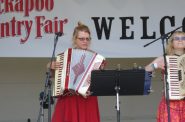 Mar 10th, 2025 by Michael Horne
Mar 10th, 2025 by Michael Horne
-
Is Governor Evers Too Old to Run Again?
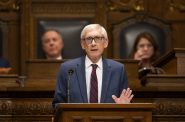 Feb 24th, 2025 by Michael Horne
Feb 24th, 2025 by Michael Horne
-
Long-Vacant Riverfront Lot to be Developed
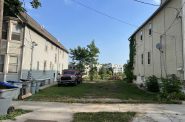 Aug 26th, 2024 by Michael Horne
Aug 26th, 2024 by Michael Horne
Transportation
-
Third Ward Noise ‘Getting Really Bad’
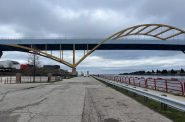 May 12th, 2025 by Jeramey Jannene
May 12th, 2025 by Jeramey Jannene
-
Hiawatha Could Use Equipment From Dying Midwest Commuter Line
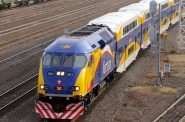 May 12th, 2025 by Jeramey Jannene
May 12th, 2025 by Jeramey Jannene
-
How Should MCTS Spend $35,000?
 May 10th, 2025 by Graham Kilmer
May 10th, 2025 by Graham Kilmer


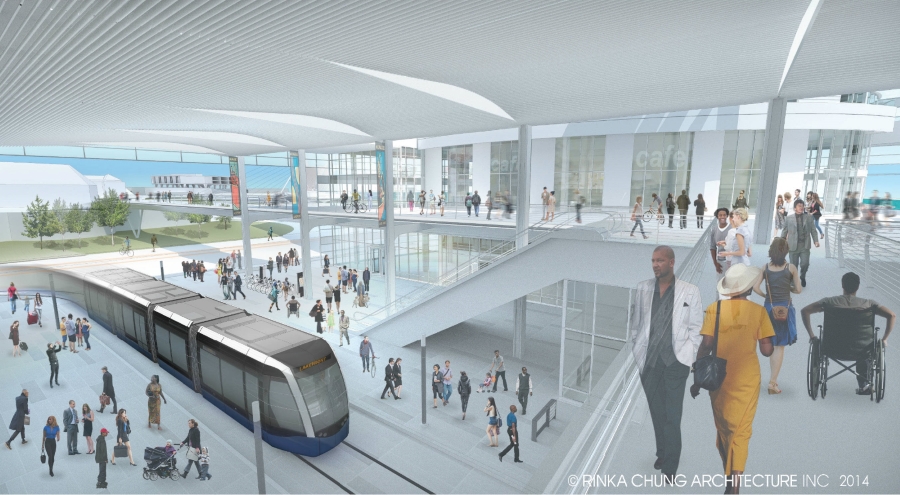
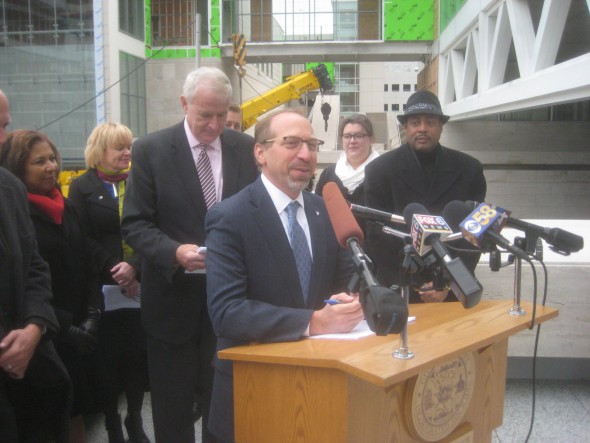
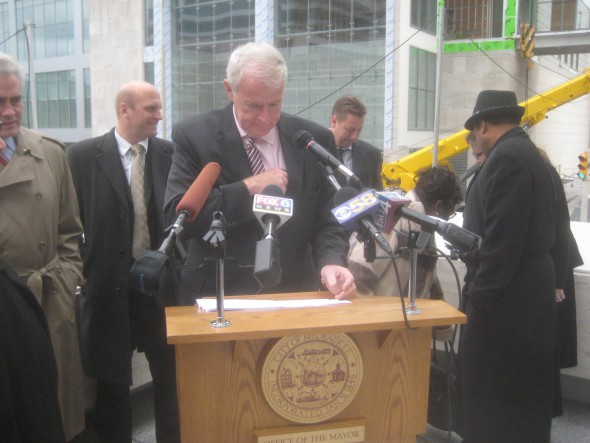
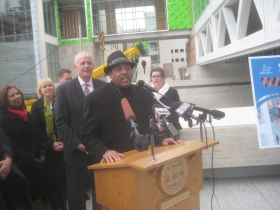
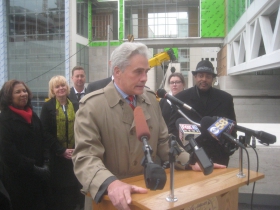
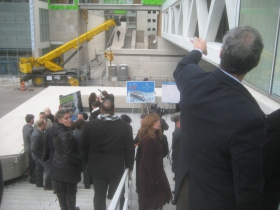
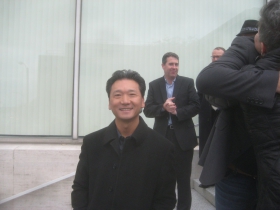
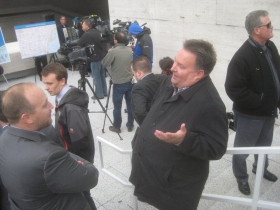
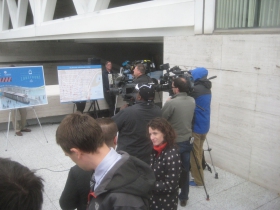
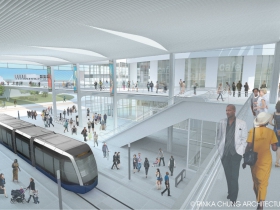
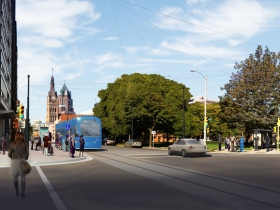
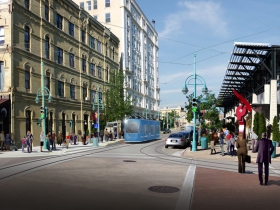
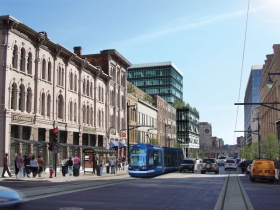
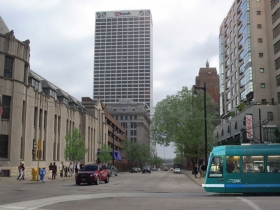
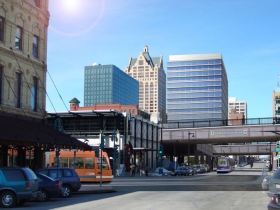




















O Goody, all Milwaukees transportation problems are solved, getting people to work, keeping them safe from robberies, crime, teaching kids to read, heroin, fentanyl epidemics. all solved by the street cars, Bucks arena.
As always, thank you for your well written, thoughtful and enlightening contribution, Bon Dohnal.
Simpleton,
We know you like to think the Heroin epidemic is located strictly on MIlwaukee’s North side, but that simply isn’t the case. Appears to be centered around every urban area.
https://www.doj.state.wi.us/dci/heroin-awareness/cases-county
We rode on both lines of the Portland Streetcar while on a summer vacation to the Pacific Northwest. The Portland Streetcar provides connections to the areas’s tourist attractions such as Pioneer Square, museums, Trailblazers arena, shopping district on the Portland transit mall (including Powell’s Bookstore), convention center and Chinatown (tasty inexpensive restaurants). We made connections to the MAX light rail system to take a memorable ride in a mountain tunnel on the way to Washington Park where the Rose Garden, Japanese Tea Garden and museums are located. We stayed at a motel on the outskirts of the city and had just a two block walk to a Tri-Met MAX station, without the need to travel in a car in challenging urban traffic conditions.
For tourists like us riding on the streetcar was easy to understand, predictable, very safe and connected to all the prime tourist destinations. Heck, the streetcar itself is a tourist attraction! Evidence of the streetcar’s economic impact on Portland was abundant with many residential, office and hotel high rises under construction. I am sure that the Milwaukee Streetcar will have a similar impact on the City of Milwaukee. It will contribute to tourism for folks traveling to destinations such as Summerfest and help the local economy by filling tables at restaurants and hotel rooms. We should see construction pick up even further as downtown Milwaukee enjoys a renaissance.
Until we reach a child literacy rate of 100%, a violent crime rate of zero, and get literally every single person off of heroin, Milwaukee should not spend a penny on anything else. Makes perfect sense, especially when Walker and Republicans in the legislature are going out of their way to help Milwaukee with huge funding increases for education, police officers, and drug treatment programs.
P. S. Tri-Met just began service on the new Orange Line to Clackamas County and of all places, Milwaukie Oregon in September. Information about the new light rail line can be found at this URL address: http://catchtheorange.com/
The article does not mention the mayor citing extensions to Haymarket and Bronzeville. The Streetcar route map says they are planned. An oversight I hope.
@M – He spoke of extending it up N. Martin Luther King Jr. Dr. to alderwoman Milele Coggs district during his speech.
It’s 119 years since the first plan for an electric line was proposed to run along the lake as part of the park that we know today. A stop would’ve been built at Lafayette Hill. Those plans included a modest velodrome located directly east of the Water Tower where walk-up food service and parking are today.